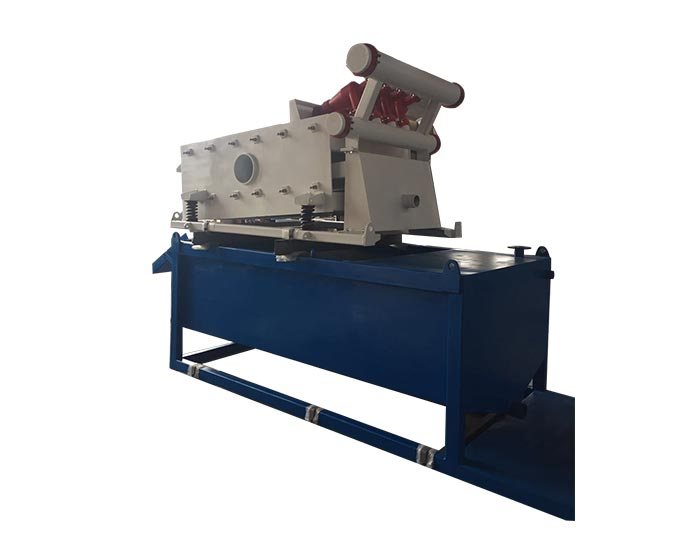Understanding Desilter Cones A Key Component in Drilling Fluid Management
In the realm of oil and gas drilling, the efficiency and effectiveness of the drilling operation greatly depend on the management of drilling fluids. One critical component of this process is the desilter cone, an essential tool used for the separation of fine solids from drilling mud. This article delves into the function, operation, and significance of desilter cones in the drilling industry.
What is a Desilter Cone?
A desilter cone is a piece of equipment used in the drilling fluid circulation system, typically found in a mud processing unit. It serves as the second stage of separation following the shale shaker and is designed to remove fine particles, generally those smaller than 20 microns, which could otherwise impair the performance of the drilling fluid. The equipment consists of a series of cone-shaped vessels through which the drilling mud flows, allowing for the effective separation of solids from the liquids.
How Do Desilter Cones Work?
The operation of desilter cones involves centrifugal action to enhance the separation of solids from the drilling mud. When the drilling fluid enters the desilter, it is directed into the cones at a specific flow rate. Gravity plays a key role in this process, as the denser solid particles settle to the bottom while the lighter liquid components are displaced to the top.
Inside the cone, the fluid velocity is increased, which aids in the separation process. The design of these cones is such that they create a swirling action that forces solids downward, while allowing the clarified liquid to flow upwards. The separated solids are then discharged from the bottom of the cone, while the treated drilling fluid continues its journey in the circulation system.
desilter cones
Importance of Desilter Cones in Drilling Operations
1. Improving Fluid Quality One of the primary functions of desilter cones is to enhance the quality of the drilling fluid by removing fine solids. This removal is crucial because excessive fine particles can lead to increased viscosity and decrease the overall performance of the mud. Improved fluid quality can lead to better penetration rates, reduced torque and drag, and ultimately, a more efficient drilling process.
2. Controlling Wellbore Stability Inadequate management of solids in drilling fluids can lead to a phenomenon known as wellbore instability. This occurs when the pressure exerted by the drilling fluid is insufficient to support the well walls, leading to collapses or other complications. Desilter cones play a vital role in maintaining the correct density and viscosity of the drilling mud, thereby ensuring the stability of the wellbore.
3. Cost-Efficiency By utilizing desilter cones, drilling operators can reduce fluid loss and the need for additional chemicals used in mud treatment. This results in significant cost savings over the course of a drilling project. Moreover, effective solids removal helps in prolonging the life of drilling equipment, reducing maintenance costs and downtime.
4. Environmental Impact The oil and gas industry faces scrutiny regarding its environmental impact. Desilter cones contribute to minimizing this impact by ensuring that drilling fluids are managed efficiently. Cleaner drilling fluids reduce the risk of contamination and enhance the overall sustainability of drilling operations.
Conclusion
Desilter cones are a fundamental component of the drilling fluid management system, essential for ensuring the efficiency, safety, and environmental responsibility of drilling operations. As the industry continues to evolve, advancements in desilter design and technology promise to enhance their effectiveness further. Understanding and implementing these tools correctly can lead to tremendous benefits in drilling operations, paving the way for more efficient resource extraction with minimal environmental repercussions. In a world increasingly focused on sustainable practices, the role of desilter cones may only grow in importance, symbolizing a commitment to technological innovation and environmental stewardship in the oil and gas sector.
 Linear Motion Shale Shaker In Drilling Rig
Linear Motion Shale Shaker In Drilling Rig  Oilfield Mud Cleaner
Oilfield Mud Cleaner  Drilling Fluid Decanter Centrifuge
Drilling Fluid Decanter Centrifuge  Drilling Mud Desander
Drilling Mud Desander  Hydrocyclone Desilter
Hydrocyclone Desilter  Centrifugal Pump/Centrifugal Mud Pump
Centrifugal Pump/Centrifugal Mud Pump  Shear Pump
Shear Pump  Jet Mud Mixer
Jet Mud Mixer  Horizontal Mud Agitator
Horizontal Mud Agitator  Constant Pressure Drilling Fluid Mud Gas Separator
Constant Pressure Drilling Fluid Mud Gas Separator  Mud Gun
Mud Gun  Mud Tank
Mud Tank  Solids Control System Vacuum Degasser
Solids Control System Vacuum Degasser  Flare Ignition Device
Flare Ignition Device  Diesel Tank
Diesel Tank  Submersible Slurry Pump
Submersible Slurry Pump 






































